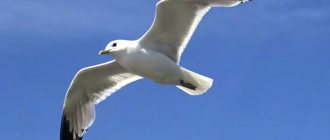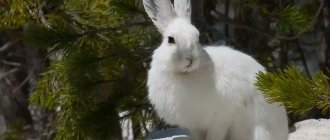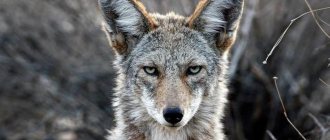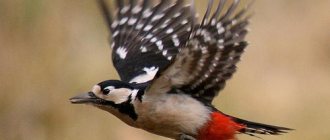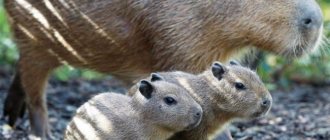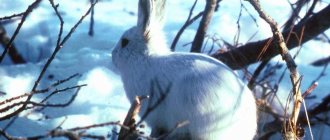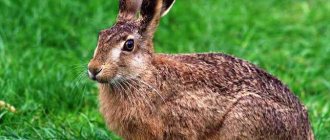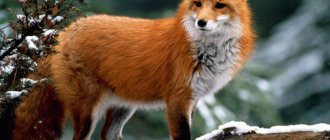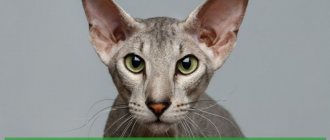The largest hare in the world (see photo in the article) is the hare, and it’s hard to disagree with this, because its size reaches about 70 centimeters in length! In Latin, the name of this species is Lepus europaeus.
It is an indigenous inhabitant of both the Eurasian and North African steppes, which over a long period migrated further and further north. Nowadays it can be found both in northern Finland and in hot Egypt. In this article you can see a photo of the largest hare in the world. Its weight will also be indicated.
Distinctive features
The hare is the largest hare in the world, and this is a generally accepted fact, since there are individuals whose weight reaches seven to eight kilograms. The most well-fed of them live in the cold north, which is also the limit of their habitat. And this is not surprising, since survival in harsh winter conditions requires a lot of subcutaneous fat. Moreover, the bunny’s skeleton is quite thin, because with a massive physique you can’t run far.
The hare differs from its closest relative, the hare, by its particularly long ears. After all, his ears rise above his head by as much as 10-14 centimeters! Its tail also stands out: both because it stretches an average of 10 cm, and because it is black and brown in color, which covers only its outer part. The hind legs are also much longer than those of the white hare, but the front legs are shorter.
The color of the fur coat of this hare varies from yellowish-gray, brown or fiery red to much lighter, but not snow-white. The color directly depends on the area and time of year, but it is known that even in winter the limbs and ears do not change their shade and remain dark.
The bunny's fur has a healthy shine and is soft and slightly wavy to the touch. Overall, this is a real beauty! And he is called a hare precisely because of his fur, which resembles brown hair of various shades.
Other types of hares
Subgenus Poecilolagus
American hare
Subgenus Lepus
Arctic hare
White hare
Subgenus Proeulagus
Black-tailed hare
White-sided hare
Cape hare
Bush hare
Subgenus Eulagos
Corsican hare
Iberian hare
Manchurian hare
curly hare
White-tailed hare
Subgenus Indolagus
Dark-necked hare
Burmese hare
Uncertain subgenus
Japanese hare
Change of fur coat
In this regard, the brown hare does not lag behind other representatives of its family, therefore it also sheds in autumn and winter. The spring wardrobe change begins at the end of March and lasts up to eighty days, ending somewhere in the last month of spring. And in the fall, the fur coat is enriched with warm and soft undercoat, which replaces fallen guard hairs. This process lasts throughout the three rainy months, only occasionally dragging on until the beginning of winter.
Description of the animal hare
The brown hare animal belongs to the class of mammals; it is a separate species belonging to the genus of large hares. Their colossal numbers are due to their highly developed and rapid reproductive function.
In order to significantly increase the population even at home, you will need only 2 individuals of opposite sexes.
Area
The largest hare in the world is found almost everywhere on the vast territory of the Russian Federation - from Lake Onega to Transcaucasia. It was brought to the Krasnodar Territory, Altai, the Far East and some other parts of our huge country and took root everywhere except Buryatia.
At the end of the 19th - beginning of the 20th century, the hare became acquainted with the climate of North America (Canada, New York), and he lives well near the Great Lakes.
In addition, the hare has artificially settled in areas such as South America, New Zealand and South Australia. In the latter he became famous as a pest.
Reproduction cycles of hares
One of the most dramatic ecological patterns known to zoologists is the breeding cycle of hares. Populations peak every 8–11 years and then plummet by a factor of 100. Predators are believed to be responsible for this pattern. Hunter populations correlate with prey populations, but with a time lag of one to two years. As the number of predators increases, the number of hares decreases, but due to the high level of hunting, the number of predators also decreases.
Once the hare population recovers, the number of predators increases again and the cycle repeats. Because hares are almost exclusively herbivores, they damage natural vegetation or crops when their populations are high. Like rabbits, hares provide people with food and fur and are part of hunting and, more recently, popular culture.
Normal activities
This large hare lives primarily in open areas such as steppe, forest-steppe and open forest (as well as within forest boundaries). You can meet it near human settlements, in ravines, and near rivers.
Most often, the hare is attached to a certain territory, which it leaves only rarely, in cases related to a shortage of food resources. Its habitat radius is about fifty hectares. The path from the hare’s “bedroom” to the “kitchen” can be tens of kilometers. In the cold season, the animal prefers to feed near human habitation or on hills, where it is possible to dig up edible vegetation.
Individuals living in mountainous areas come closer to the water with the onset of autumn, and go back in the spring.
Stepnoy (hare)
Popularly, the type of hare that lives in the forest-steppe zone in central Russia is called steppe. It is considered a large rodent (up to 7 kg).
What does a brown hare look like? Where does he live? Rusaks settle in open forest areas. Especially in areas of general deforestation. Unlike the hare, when winter approaches, the hare tries to settle near a populated area due to the fact that there is not enough food in the winter forest for this type of hare.
Hunting for hare (November-February) is popular and acquires a sporting excitement. The reason for such attention from hunters is that rodent meat is nutritious and tasty, and its fur is in demand among the population. Therefore, the steppe hare constitutes the golden fund of Russian hunting.
Night life
The largest hare in the world prefers to do its business exclusively in the dark, so you can meet it in the light of day only during the breeding season.
The hare is especially active at the beginning and end of the night. If circumstances are not the best, he can sleep for more than one day, remaining without food. In summer, the hare’s “bedroom” is a small hole dug under a fallen tree, in thickets of tall grass, in the shade of a large bush, or in the middle of a field. The hare does not suit himself with permanent housing, because he needs a hole only as a shelter from the scorching summer sun.
Often the largest hare in the world finds shelter in the burrows of its neighbors - foxes, badgers or marmots. The choice of a place for a hare's daytime rest directly depends on the characteristics of the time of year.
With the onset of spring, he chooses places warmed by the still timid rays of the sun, and during floods he prefers higher places.
In winter, the hare finds shelter among the snow covers, hidden from the icy winds. If the depth of the snowdrift is quite large, the hare digs holes up to two meters in length. There are often cases when a hare has an eye for a cozy haystack, prepared by practical villagers for their own purposes.
Reproduction
Hares often live in pairs, but this does not always happen. The brown hare acutely feels the need to continue the race during the cold days of February, and the male’s passion lasts until the very end of the summer period.
A hare's pregnancy lasts up to twenty days, and each individual individual is capable of giving birth up to two or three times a year, bringing up to four cubs at a time.
Hares are born sighted and after a week begin the transition from mother's milk to food common to adults. Their ability to reproduce begins by next spring.
Juveniles have a white star on the forehead, which is formed from several light hairs, and the ears, depending on various unfavorable conditions at this age, may be slightly torn. The bones of the skeleton are also quite fragile and easily vulnerable.
By the onset of advanced age, the weight of the largest hare reaches its maximum and, of course, depends on the habitat. Under favorable conditions, it can reach seven kilograms! The backbone at this age becomes stronger and plays an important role in the weight of the bunny.
About a quarter of the representatives of this species die from diseases associated with the digestive and respiratory organs, and most of them are still young hares. Floods, hunger and cold are difficult trials for hare, as they can suffer not only due to these factors, but also from becoming dinner for predators.
How lagomorphs escape from predators
Hares run away from predators and confuse hunters when they return. Rabbits take refuge in burrows. Therefore, hares travel considerable distances and have a wide range, while rabbits remain in close proximity to safe shelters in small areas. All lagomorphs use distress calls or strike the ground with their hind feet to warn of a predator.
A hare escapes from a lynx
Hares have keen hearing, but scent marking is another way of communication. They have scent glands on the nose, chin and around the anus.
Hare menu
The diet varies depending on the time of year, which is not surprising, since the hare is (mostly) a herbivore. The hare menu looks something like this:
- Warm season: young twigs and shoots filled with juice, fresh leaves, dandelions, clover and other non-poisonous herbaceous plants. The hare likes to eat some vegetables, fruits and berries as a treat.
- During the cold season, vegetable remains and tree bark extracted from under the snow are the key to survival in harsh conditions. Moreover, hares often give preference to fruit-bearing trees, which irritates rural residents a lot. It is known that in particularly harsh winter conditions, hares eat partridges that are found in snares set by hunters. Therefore, we can say that the hare is still omnivorous.
Interesting facts about hares
- The hare is the largest and heaviest of the family members.
- Hunger can force a hare to eat bird meat.
- This is a wild forest animal that is only cowardly in fairy tales. There was a case when a hare, raised by a shepherd, behaved like a real dog, bravely defending its honor among other dogs.
- The hare's eyes are not slanted at all, but are located on the sides of the wedge-shaped head for better visibility.
- Fleeing from danger, the hare meanders not just for the sake of “tangling” the trail, but also because of the asymmetrically developed left and right limbs.
- You can distinguish a male from a female by the presence of plumper cheeks and a thicker neck.
Now you know how much the largest hare weighs and what its height and weight depend on.

